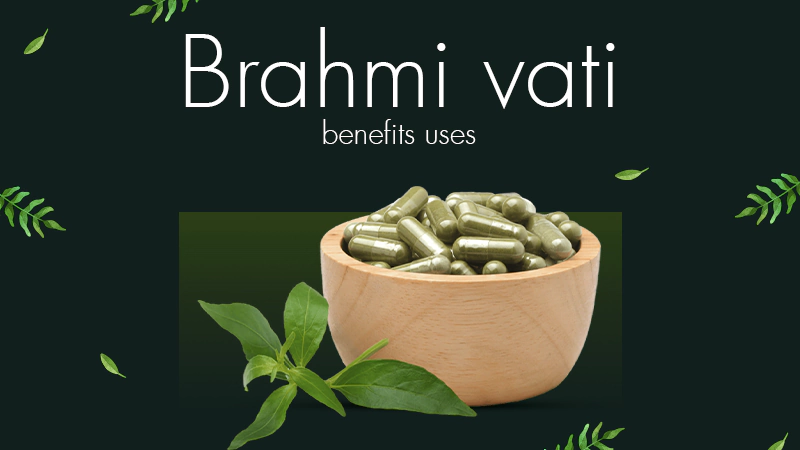After over a decade of usage, I can say that the Haridrakhand is one of the best Ayurvedic medicines to cure seasonal allergies. It is a mixture of various herbs and is often confused with turmeric, but it’s not turmeric.
Having personally benefitted from Haridrakhand, I will cover all its aspects, like uses, benefits, internal and topical dosage, precautions, and the method to prepare it at home.
What is Haridrakhand?

Haridrakhand is an old and classic Ayurvedic herbal medicine that is made from turmeric (haridra). It is a powdered formulation with ingredients like primarily turmeric and other spices and herbs.
I have used Haridrakhand for a considerable time to cure my eczema, itching, rashes, and fungal infections, and surprisingly, it has helped me recover faster than any other allopathic medicine.

If you also have skin issues, like allergies, itching, urticaria, and inflammation, Haridrakhand can be your go-to remedy, as it has anti-inflammatory, anti-allergic, and antioxidant properties.
Ingredients of Haridrakhand include:
- Haridra (Turmeric)
- Triphala (Amalaki, Bibhitaki, and Haritaki)
- Trikatu (Black pepper, Long pepper, Dry ginger)
- Sugar and Ghee
- Nishoth, Amla, and Haritaki
- Nagarmotha (Mustak)
- Nishoth (Trivrit)
- Cinnamon (Dalchini)
- Tej Patra (Bay Leaf)
- Giloy (Guduchi)
| Research Summary Box: 2017 Study: Validated a UV-spectrophotometric method to measure curcumin content in Haridrakhand. (Turmeric is the major ingredient). 2019 Study: Developed RP-HPLC/HPTLC methods for accurate curcumin estimation in Haridrakhand tablets. Implication: Confirms that Haridrakhand is a standardized, quality-controlled Ayurvedic formulation, not just a homemade mix, ensuring consistent curcumin content and therapeutic benefits. |
Stop your search today for an immunity booster and check out this rejuvenating remedy that also purifies blood and supports healthy skin.
Enough of understanding Haridrakhand; let’s hop into its uses in depth.
What Are the Uses of Haridrakhand?
I personally used it to cure my eczema, but Haridrakhand uses are numerous, ranging from hives to respiratory allergies, like mild asthma. Haridrakhand is mainly linked to allergies and skin inflammation; practitioners recommend it for the following:
- Itching, Rashes, or Hives: These issues occur due to excessive heat and toxins in the blood, and Haridrakhand’s anti-inflammatory property cools it down and calms the irritation. One similar case is shared by imrichh on Reddit, where he mentioned how Haridrakhand used for a time helped him recover from his hives.

- Seasonal Allergies: It is also used to cure seasonal allergies, like sneezing, runny nose, and watery eyes. I can’t forget how much of a devotee I was for Haridrakhand milk when I was 10 to cure my seasonal cold.
- Eczema and Psoriasis Flare-ups: This is a chronic skin issue that is caused when there is internal imbalance and toxin accumulation. Consuming Haridrakhand helps in countering liver toxins, reduces itching, and purifies blood.
- Digestive Issues Linked to Allergic Reactions: Ever since I was 18, I was told to stick to Ayurveda for digestion-related issues, and it’s the same with Haridrakhand. Triphala and Trikatu, which are present in it, enhance digestion and intestinal health.
- Respiratory Allergies: Haridrakhand is also useful in reducing airway irritation with its anti-inflammatory properties. Use it to ease sneezing, chest tightness, and shortness of breath caused by seasonal allergens. Its regular users have also noticed fewer seasonal allergies and shared their experience on Reddit.

| Quick Answer: Haridrakhand is mostly used to treat respiratory conditions, including sneezing and mild asthma brought on by allergens, as well as skin allergies, itching, eczema, and urticaria. |
What are the Benefits of Haridrakhand?
Enough of the uses. The results and positive effects of Haridrakhand that I also personally noticed after consistent use are blood detoxification, reduction in inflammation and itching, boost in liver function, and enhancement of immunity.
- Detoxes Blood: Reduces toxins and promotes healthy skin.
- Naturally Reduces Inflammation and Itching: Provides relief from skin irritation.
- Improves Liver Function: Improves digestion and balances metabolism.
- Boosts Immunity: Strengthens the body’s defenses against seasonal triggers and allergies.
| Research Summary Box: Study Year: 2017 Sample Size: 39 patients Dosage: 3 g twice daily with milk for 14 days Outcome: Significant relief in itching, burning, and swelling (p < 0.001) Source: Journal of Research in Ayurvedic Sciences |
How to Take Haridrakhand? (Dosage Guide)
I have been taking 3-6 gm of Haridrakhand every day for more than a decade now and I would recommend consulting an Ayurveda practitioner before starting to consume it. Here are some dosage practices to follow:
- 3-6 gm for adults between 18 and 60 years old.
- 3 gm for over 60 years old individuals.
- Consume it with warm water or milk after meals.
- For Kapha-related issues, like heavy cough, mucus, and allergies, take it with warm water.
- For Pitta-dominant issues, like skin burning and redness, take it with cold milk.
- Practitioner’s advice is mandatory for offering it to kids.
| Quick Answer: Depending on your body type (Dosha), people should take 3–6 grams daily after meals with either warm water or milk. Before beginning, always get advice from an Ayurvedic practitioner. |
How to Use Haridrakhand? (Topical/External Use)
Along with internal intake, Haridrakhand uses are also topical or to say, external. While intake is believed to be more beneficial, some people prefer topical ways. So, here is how to use Haridrakhand externally.
- Apply the paste made with Haridrakhand granules mixed with aloe vera or rose directly on the itchy areas.
- Use once or twice a day to get relief from itching and irritation.
- Avoid applying to open wounds and sensitive areas.
What are the Precautions and Side Effects of Haridrakhand?
Generally, there are no side effects of taking Haridrakhand, but there are some precautions that need to be looked at.
- Haridrakhand contains sugar granules, so people with diabetes should avoid it and be cautious.
- Pregnant and lactating women should also avoid it or consult a practitioner before consumption.
- Overdosage may lead to digestive issues, so keep the dosage under the prescribed limit.
- Avoid going with cheap options; always choose a trusted brand.
| Research Summary Box: Study Year: 2017–2018 Study Type: Phase I Open-Label Clinical Trial Sample Size: Healthy adult volunteers Dosage: 2,500 mg/day of Triphala aqueous extract for 4 weeks Outcome: No serious adverse effects; participants showed improved HDL (good cholesterol) and reduced blood sugar levels by days 14 and 35 Relevance: Supports the safety and metabolic benefits of Triphala, one of Haridrakhand’s main ingredients. Source: Sireeratawong S et al., Journal of Ayurveda and Integrative Medicine (2019) |
Even if you don’t trust any branded Haridrakhand in the market, I have mentioned the method to make it at your home. So, skim through the next section.
How to Make Haridrakhand at Home?
I also make Haridrakhand at my home and the ingredients you need are as follows:
- Triphala churna (Amla, Haritaki, Bibhitaki)
- Haridra (Turmeric powder)
- Trikatu churna (Black pepper, Long pepper, Dry ginger)
Nishoth (Turpeth root) - Ghee (clarified butter)
- Sugar
- Cow milk
Approximate Quantities:
|
Let’s see the method to prepare it.
- Powder all the herbs and store them in a cool and dry place.
- Prepare a light sugar syrup in a pan.
- After the syrup cools down and thickens, add the powdered herbs while continuously stirring to avoid lumps.
- Add ghee and a tablespoon of milk and stir it for a few minutes to adjust its consistency.
- Let it cool down and store it in a glass airtight container.
| Quick Answer: Powder herbs like turmeric, Triphala, Trikatu, and Nishoth >> Mix it with sugar syrup >> Add ghee and one tablespoon of milk >> Stir the blend until it thickens >> Cool and store it in an airtight glass jar. |
Conclusion
If your support for countering seasonal allergies has been allopathic medicines till now, trying this Ayurveda solution can be a lifelong solution.
Haridrakhand is made up of various herbs mixed with milk, ghee, and sugar, and cures issues like itching, rashes, digestive issues, and many more.
Quick Summary:
|
FAQs
Q1: How to use Haridrakhand as someone below 18 years old?
Ans: Although a dosage of below 3 gm is considered safe, always consult an Ayurveda practitioner before consuming Haridrakhand.
Q2: Is Haridrakhand the same as turmeric?
Ans: No, turmeric and Haridrakhand are not the same. Turmeric is used to make Haridrakhand along with a huge list of other ingredients.
Q3: Is Haridrakhand good for skin pigmentation?
Ans: Yes, Haridrakhand is good for skin pigmentation, and it has an anti-pigmentation formula.
Q4: How is Haridrakhand made?
Ans: Triphala churna, Haridra, Trikatu churna, Nishoth, Ghee, Sugar, and Cow milk are the ingredients to make haridrakhand.
Q5: What are the other names of Haridrakhand?
Ans: The other names of Haridrakhand are Kanchani, Peeta, Nisha, Varavarnini, and Yoshitpriya.










